Abstract
A class of galactose-resistant mutants has been derived from strains of Salmonella typhimurium which are defective in uridine diphosphoglucose-4-epimerase. Resistant strains are phenotypically similar to parent organisms but do not lyse in the presence of galactose. Low levels of functional epimerase can be detected in induced cells grown at 20 C but not at 37 C, and acid is not produced from galactose. Sufficient galactose is synthesized at reduced temperatures to fabricate smooth lipopolysaccharide and acceptor sites for phage P22 from galactose-deficient media. The leaky nature of these mutants may account for resistance to galactose death by maintaining galactose metabolites at a subcritical level. Glucose protects sensitive strains by control of levels of toxic metabolites by catabolite repression.
Full text
PDF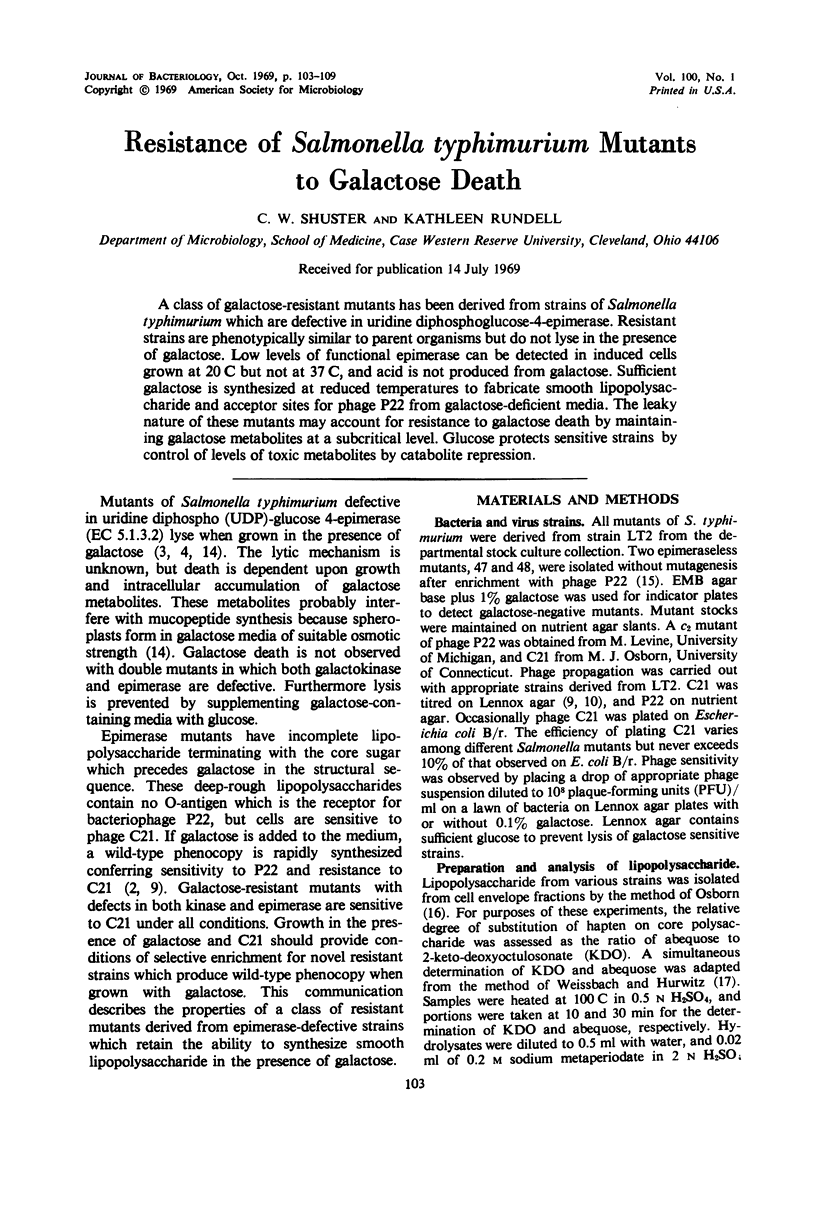
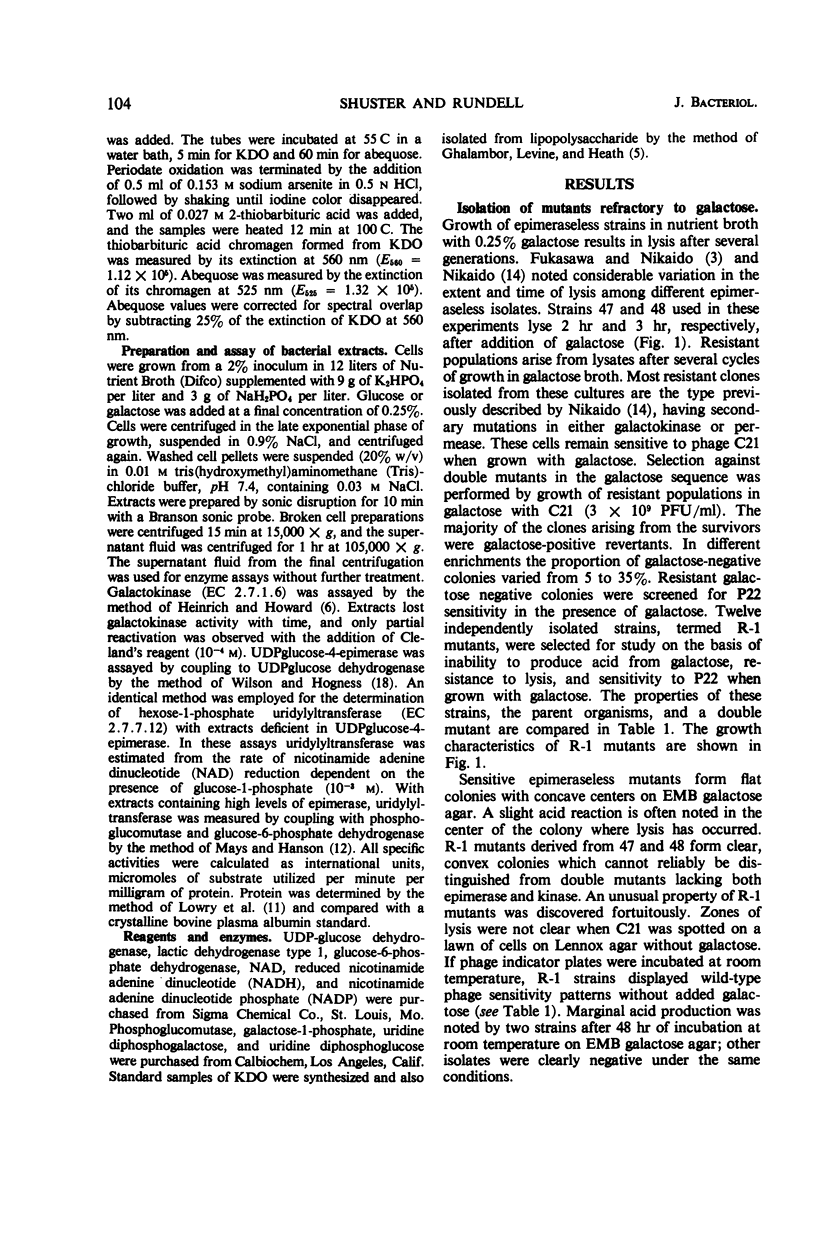
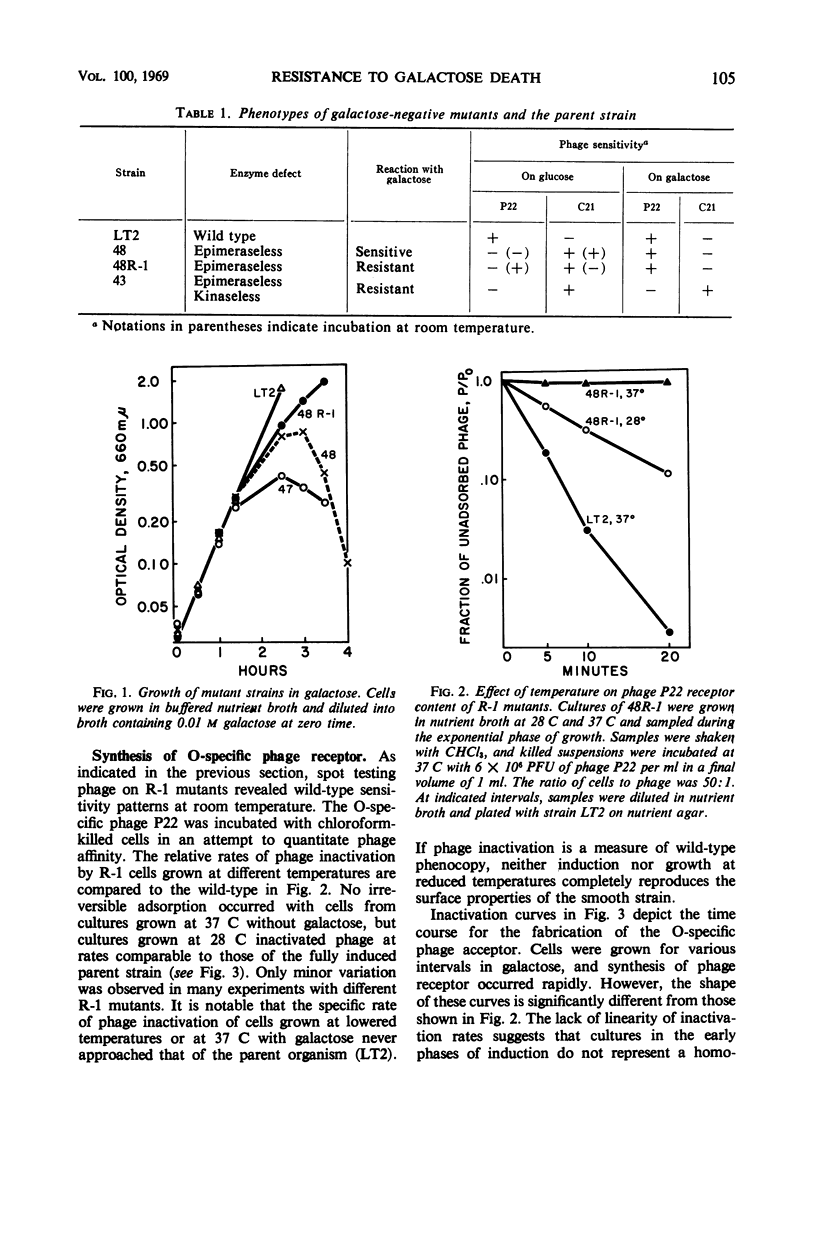
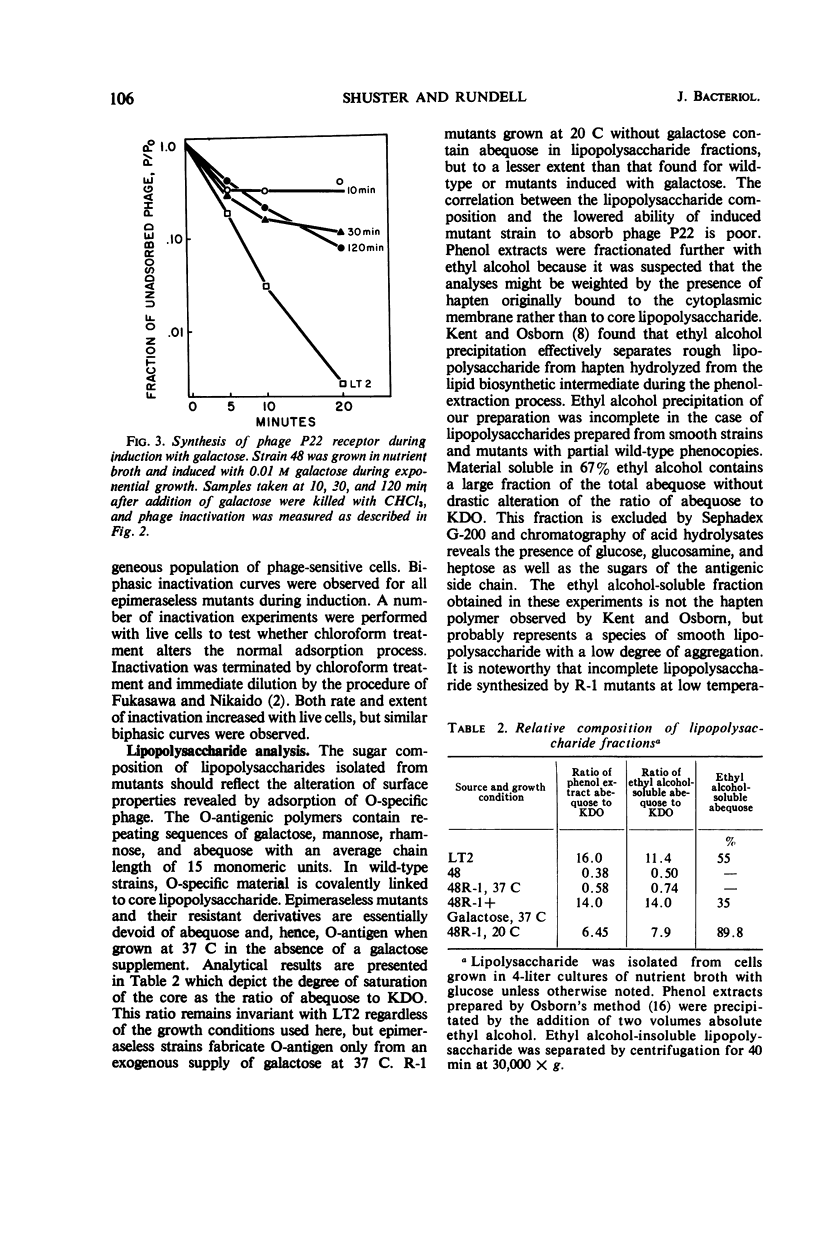
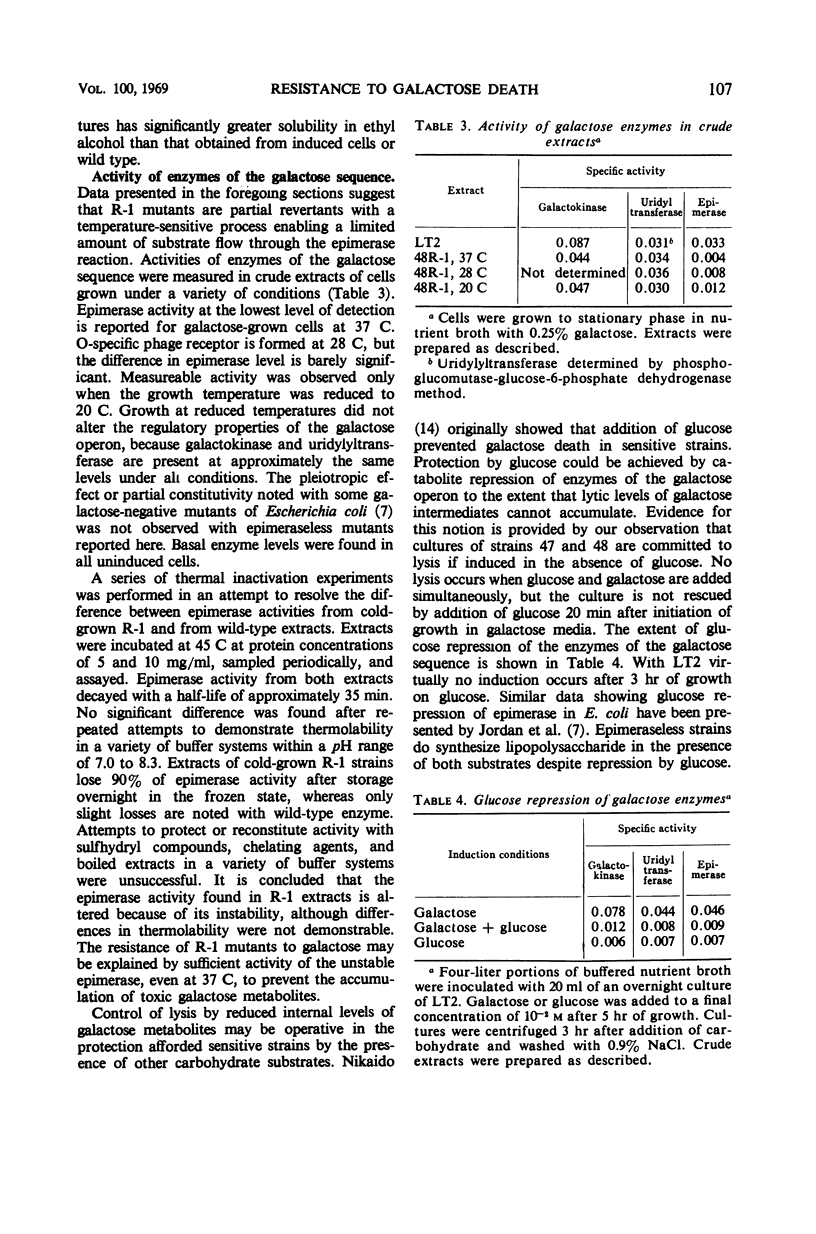
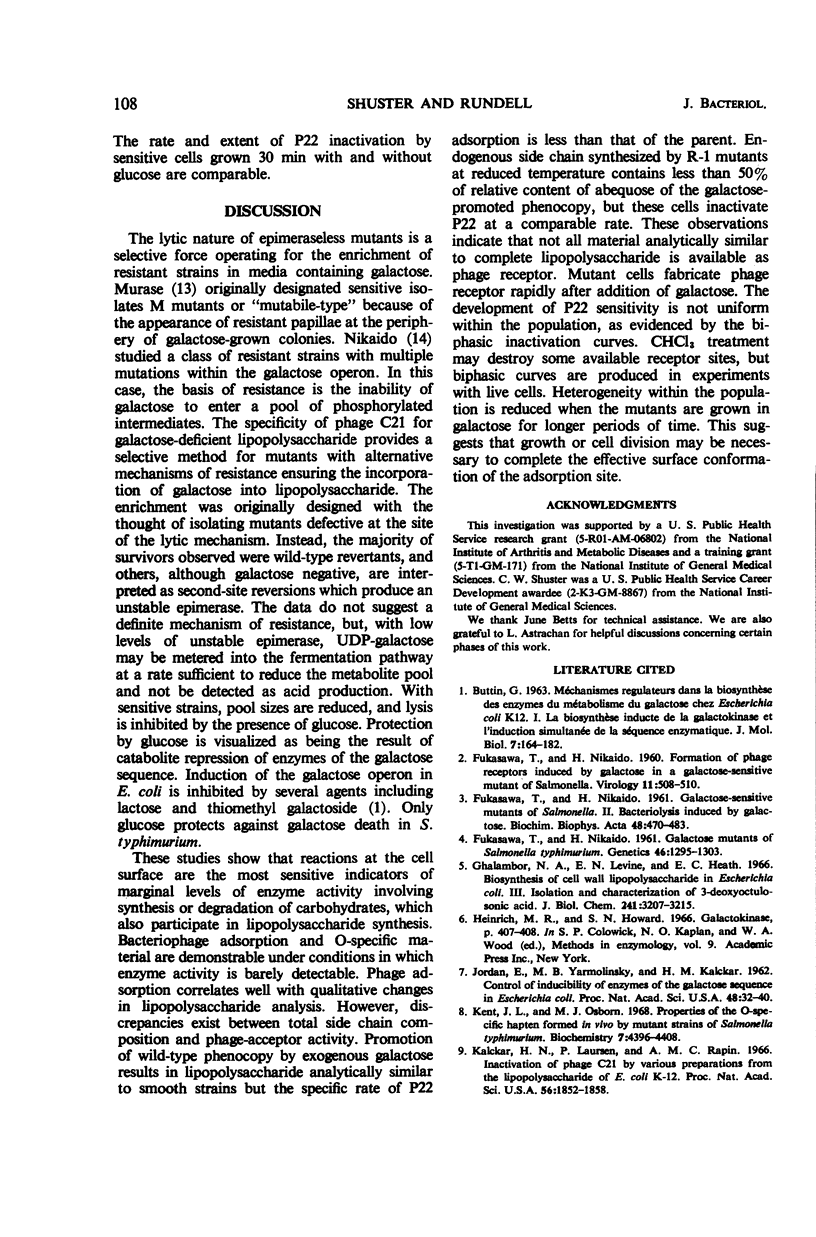
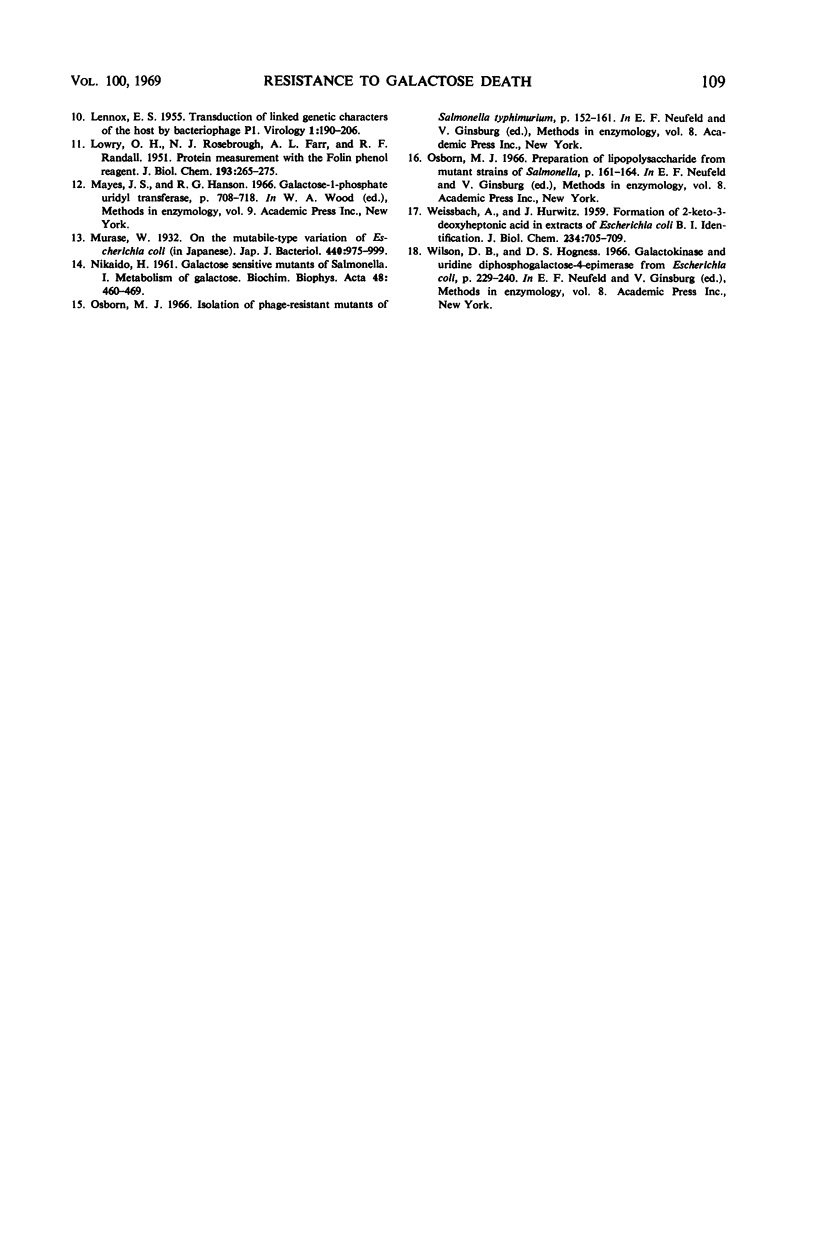
Selected References
These references are in PubMed. This may not be the complete list of references from this article.
- BUTTIN G. M'ECANISMES R'EGULATEURS DANS LA BIOSYNTH'ESE DES ENZYMES DU M'ETABOLISME DU GALACTOSE CHEZ ESCHERICHIA COLI K12. I. LA BIOSYNTH'ESE INDUITE DE LA GALACTOKINASE ET L'INDUCTION SIMULTAN'EE DE LA S'EQUENCE ENZYMATIQUE. J Mol Biol. 1963 Aug;7:164–182. doi: 10.1016/s0022-2836(63)80044-3. [DOI] [PubMed] [Google Scholar]
- FUKASAWA T., NIKAIDO H. Formation of phage receptors induced by galactose in a galactose-sensitive mutant of Salmonella. Virology. 1960 Jun;11:508–510. doi: 10.1016/0042-6822(60)90093-3. [DOI] [PubMed] [Google Scholar]
- FUKASAWA T., NIKAIDO H. Galactose mutants of Salmonella typhimurium. Genetics. 1961 Oct;46:1295–1303. doi: 10.1093/genetics/46.10.1295. [DOI] [PMC free article] [PubMed] [Google Scholar]
- FUKASAWA T., NIKAIDO H. Galactose-sensitive mutants of Salmonella. II. Bacteriolysis induced by galactose. Biochim Biophys Acta. 1961 Apr 15;48:470–483. doi: 10.1016/0006-3002(61)90045-2. [DOI] [PubMed] [Google Scholar]
- Ghalambor M. A., Levine E. M., Heath E. C. The biosynthesis of cell wall lipopolysaccharide in Escherichia coli. 3. The isolation and characterization of 3-deoxyoctulosonic acid. J Biol Chem. 1966 Jul 10;241(13):3207–3215. [PubMed] [Google Scholar]
- JORDAN E., YARMOLINSKY M. B., KALCKAR H. M. Control of inducibility of enzymes of the galactose sequence in Escherichia coli. Proc Natl Acad Sci U S A. 1962 Jan 15;48:32–40. doi: 10.1073/pnas.48.1.32. [DOI] [PMC free article] [PubMed] [Google Scholar]
- Kalckar H. M., Laursen P., Rapin A. M. Inactivation of phage c21 by various preparations from lipopolysaccharide of e. Coli k-12. Proc Natl Acad Sci U S A. 1966 Dec;56(6):1852–1858. doi: 10.1073/pnas.56.6.1852. [DOI] [PMC free article] [PubMed] [Google Scholar]
- Kent J. L., Osborn M. J. Properties of the O-specific hapten formed in vivo by mutant strains of Salmonella typhimurium. Biochemistry. 1968 Dec;7(12):4396–4408. doi: 10.1021/bi00852a036. [DOI] [PubMed] [Google Scholar]
- LENNOX E. S. Transduction of linked genetic characters of the host by bacteriophage P1. Virology. 1955 Jul;1(2):190–206. doi: 10.1016/0042-6822(55)90016-7. [DOI] [PubMed] [Google Scholar]
- LOWRY O. H., ROSEBROUGH N. J., FARR A. L., RANDALL R. J. Protein measurement with the Folin phenol reagent. J Biol Chem. 1951 Nov;193(1):265–275. [PubMed] [Google Scholar]
- NIKAIDO H. Galactose-sensitive mutants of Salmonella. I. Metabolism of galactose. Biochim Biophys Acta. 1961 Apr 15;48:460–469. doi: 10.1016/0006-3002(61)90044-0. [DOI] [PubMed] [Google Scholar]
- WEISSBACH A., HURWITZ J. The formation of 2-keto-3-deoxyheptonic acid in extracts of Escherichia coli B. I. Identification. J Biol Chem. 1959 Apr;234(4):705–709. [PubMed] [Google Scholar]


